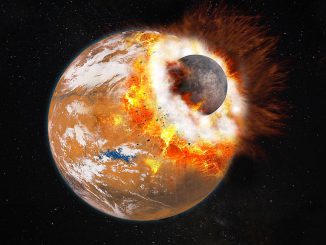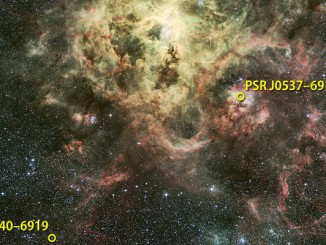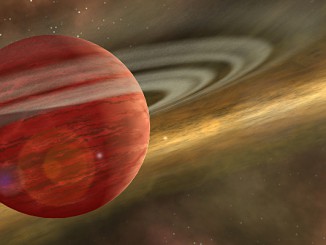
CNRS


Shedding light on Pluto’s glaciers
What is the origin of the large heart-shaped nitrogen glacier on Pluto revealed by NASA’s New Horizons spacecraft in 2015? Two French researchers show that Pluto’s peculiar insolation and atmosphere favour nitrogen condensation near the equator, in the lower altitude regions, leading to an accumulation of ice at the bottom of Sputnik Planum, a vast topographic basin.

Mystery solved: Martian moons formed by a giant impact
Where did the two natural satellites of Mars, Phobos and Deimos, come from? For a long time, their shape suggested that they were captured asteroids. However, the shape and course of their orbits contradict this hypothesis. Two independent and complementary studies now provide an answer: these satellites formed from the debris of a gigantic collision between Mars and a protoplanet one-third its size.

Gravitational waves detected from second pair of coalescing black holes
Three months after announcing the first detection of gravitational waves, scientists report a second observation of the merger of two black holes made on 26 December 2015. The scientists were able to infer that the mass of the black holes was between 8 and 14 solar masses and the event took place at a distance of about 1.4 billion light-years from Earth.

Moon thought to play major role in maintaining Earth’s magnetic field
The Earth’s magnetic field is produced by the geodynamo, the rapid motion of huge quantities of liquid iron alloy in the Earth’s outer core. A team of French researchers suggests that elastic deformation of our planet’s mantle due to tidal effects caused by the Moon — overlooked until now — transfers energy to the Earth’s outer core, keeping the geodynamo active.

Great tilt gave ancient Mars a new face
Mars hasn’t always looked like it does today. Some 3 to 3.5 billion years ago, the planet underwent a huge tilt of 20 to 25 degrees. The gigantic Tharsis volcanic dome, which started to form over 3.7 billion years ago, grew so massive that it caused Mars’ crust and mantle to swivel around, shifting the Tharsis dome to the planet’s equator.


NASA’s Fermi satellite detects first gamma-ray pulsar in another galaxy
Researchers using NASA’s Fermi Gamma-ray Space Telescope have discovered the first gamma-ray pulsar in a galaxy other than our own. Known as PSR J0540-6919, the object sets a new record for the most luminous gamma-ray pulsar known. The pulsar lies in the outskirts of the Tarantula Nebula in the Large Magellanic Cloud, a small galaxy that is located 163,000 light-years away.

‘Hot Jupiter’ exoplanets may have formed very rapidly
Twenty years after they were first discovered, ‘hot Jupiters’ — gas giant planets that orbit very close to their star — are still enigmatic objects. Using the Canada-France-Hawaii Telescope, an international team of astrophysicists has shown that such bodies may only take several million years to migrate close to their newly formed star.

MUSE looks deeper into the universe than Hubble in 3-D
The MUSE instrument on ESO’s Very Large Telescope has given astronomers the best ever three-dimensional view of the deep universe. The new observations of the Hubble Deep Field South reveal the distances, motions and other properties of far more galaxies than ever before in this tiny piece of the sky.
